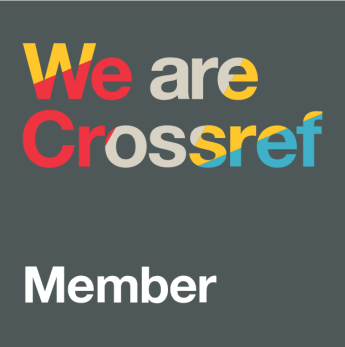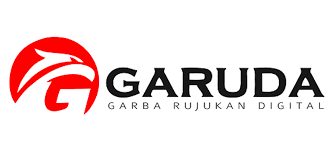Tentang Jurnal Ini
ABDI SEMBRANI is a journal that publishes scientific articles from various disciplines. ABDI SEMBRANI was published by Institute for Community Service Universitas PGRI Ronggolawe (Unirow) Tuban (LPM Unirow). Articles published in the ABDI SEMBRANI include community service from various academic circles. The articles published in ABDI SEMBRANI are articles that have gone through the review process by Bestari Partners (peer-reviewers).
FOCUS AND SCOPE
Articles in the form of community service related to the field of infrastructure and development of human resources, management of rural areas, coastal areas, local wisdom, economic development, entrepreneurship, creative industries, legal studies, technology development, environmental insights, health, nutrition, arts, literature, and culture, as well as education in various science groups.
PUBLICATION ETHIC
ABDI SEMBRANI is a journal published by the Institute for Community Service Universitas PGRI Ronggolawe (Unirow) Tuban (LPM Unirow). This statement explains the ethical behavior of all parties involved in publishing articles in this journal, namely the author, editor-in-chief, editor, peer reviewer, and publisher.
Editor's Responsibilities
- Editor of the ABDI SEMBRANI Journal is responsible for deciding which articles are worthy of publication through the editorial board meeting. The editor is guided by the editorial board's journal policies and is limited by applicable legal requirements regarding defamation, copyright infringement and plagiarism.
- In the process of receiving articles, the editor team based on the principle of equality of treatment.
- In the journal review process and publication decision (article), the editor's team does not distinguish the gender, religion, ethnicity, nationality, or political ideology of the author.
- The editor and editorial team will not disclose any information about the manuscript or article entered except with the permission of the author.
- Unpublished manuscripts (articles) will not be used by the editor themselves and will be returned directly to the author.
Reviewer’s Responsibilities
Reviewers assist editors in making editorial decisions on incoming texts / articles
- The reviewer is responsible for the recommendations of the article reviewed.
- Review of the manuscript is done objectively, and is supported by clear arguments.
- Reviewer is responsible for quotations, references, and plagiarism for the articles reviewed.
- Reviewers maintain the confidentiality of information for personal gain.
Author's Responsibilities
- The author must present articles of thought clearly, honestly, without plagiarism or data manipulation.
- The author is responsible for the confirmation submitted for the article that has been written.
- Authors must comply with publication requirements in the form of work originality, not plagiarism, and have never been published in other journals or publications.
- The author must show references from the opinions and works of others quoted
- The author must write a script or article ethically, honestly and responsibly, in accordance with applicable scientific writing regulations.
- Authors are prohibited from sending / publishing the same article to more than one journal or publication.
- The author does not mind if the manuscript edited without changing the substance or main idea of writing.
Publisher's Responsibilities
- Institute for Community Service Universitas PGRI Ronggolawe (Unirow) Tuban (LPM Unirow) as the publisher of ABDI SEMBRANIJournal is responsible for publishing articles that after going through the process of editing, peer review, layouts are in accordance with the rules of Scientific Journal publishing.
- ABDI SEMBRANIis responsible for ensuring academic freedom for editors and reviewers in carrying out their respective duties.
- ABDI SEMBRANI is responsible for maintaining privacy and protecting intellectual property and copyright, and editorial freedo
AUTHOR GUIDELINE
We present the format for writing articles for the ABDI SEMBRANI:
General requirements
- Articles received are articles that have never been published in any journal or are not in the status of being accepted for publication
- Articles in the form of community service related to the field of infrastructure and development of human resources, management of rural areas, coastal areas, local wisdom, economic development, entrepreneurship, creative industries, legal studies, technology development, environmental insights, health, nutrition, arts, literature, and culture, as well as education in various science groups
- The article is enclosed with a statement of authenticity from the author stating that the article written is truly the work itself and does not contain plagiarism
- Articles published online, not in print out.
Writing system
- Article writing has a maximum of 5000 words (including captions and tables, except titles, abstracts, and bibliography), typed with spaces 1 on A4 size paper (upper limit 1.25cm, lower limit 1.25cm, left side border 1, 25cm, and the right side border is 1.25cm) with Times New Roman font size 11pt.
- Uncommon words or foreign languages are written in Italic format. Each paragraph starts 10mm from the far left and there are no spaces between paragraphs. Each number is written in the Arabic numbering format, except for new sentences.
- Each picture must be given a caption below the picture and given a number in the Arabic numbering format followed by the title of the image. Each table must be given a title and number in the Arabic numbering format followed by the table title. The lines allowed in the table are horizontal lines (only important points). Pictures, Tables and Charts must be placed in the middle (between groups of texts).
- Templates and guidelines for writing manuscript articles can be downloaded.
- Manuscripts that do not comply with the ABDIMAS UNIVERSAL writing guidelines will be returned to the author prior to the peer review process.
- The composition of the article consists of: Title, Author Name, Address / Author Affiliation, Abstract, Introduction, Materials and Methods, Results and Discussion, Conclusions and Suggestions, Acknowledgments, and Reference Lists.
Specifically, the following details will be explained:
- The title consists of 15-20 words
- The author's name is written without a title, complete with an address / affiliate, institution name, and e-mail address
- Abstracts are written in Indonesian and English, one paragraph, consisting of 150-200 words, 10pt font size and contain: problems, objectives, methods, results or product activities, and conclusions. Keywords 3-5 words.
- The introduction contains the background of the problems that inspire the implementation of service, the objectives of the activity, the scope (material and territory), and relevant literature reviews.
- Materials and methods describe the technical / methods used to solve the problem, as well as some materials and tools used in the implementation of community service. Example: Writing Scientific Training, for example activities accompanied by material briefing, demonstration, or practice or pilot to produce scientific papers. Also explain the target groups or subjects who are partners of community service activities.
- The results and discussion contain descriptions of community service data in the field as well as results or outcomes in the form of increasing knowledge, skills or in the form of products. The results also reveal the level of achievement of the target activities. Writing in this section needs to be completed with photos, tables, graphs, charts, images, and so on. The discussion is accompanied by a logical argument by linking the results of dedication to the community with a theory / literature review, the results of service or relevant research.
- Conclusions and Suggestions are written concisely, but contain the substance of the results of community service and suggestions for further activities.
- The Reference List is written containing references from sources published in the last 10 years. Writing a reference list is recommended using the application Reference Manager such as Mendeley, EndNote, atau Zoterousing the APA 6th Edition (American Psychological Association) format. All reference sources listed in the article must be included in the Reference List. Reference sources must be taken from primary sources (scientific journals and a minimum of 80% of total reference sources) in the last 10 years. Each article must have at least 10 reference sources.
AUTHOR FEE
Article Submission: 0.00 (IDR)
Fast-Track Review: 0.00 (IDR)
Article Publication: 0,00 (IDR)
If this paper is accepted for publication, you will be asked to pay an Article Publication Fee to cover publications costs.
If you do not have funds to pay such fees, you will have an opportunity to waive each fee. We do not want fees to prevent the publication of worthy work.







